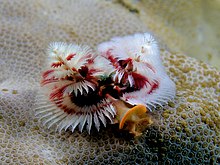
Avatar is a 2009 epic science fiction film directed, written, co-produced, and co-edited by James Cameron. The cast includes Sam Worthington, Zoe Saldana, Sigourney Weaver, Michelle Rodriguez, Stephen Lang, Joel David Moore, Giovanni Ribisi, CCH Pounder, Dileep Rao, Matt Gerald, Laz Alonso, and Wes Studi It is the first installment in the Avatar film series. It is set in the mid-22nd century, when humans are colonizing Pandora, a lush habitable moon of a gas giant in the Alpha Centauri star system, in order to mine the valuable mineral unobtanium, the room-temperature superconductor mineral. The expansion of the mining colony threatens the continued existence of a local tribe of Na'vi, a humanoid species indigenous to Pandora. The title of the film refers to a genetically engineered Na'vi body operated from the brain of a remotely located human that is used to interact with the natives of Pandora.

Avatar: The Game is a 2009 third-person shooter action-adventure game based on the 2009 film Avatar. The game was developed by Ubisoft Montreal and published by Ubisoft. It was released on the PlayStation 3, Xbox 360, Microsoft Windows, Wii, and Nintendo DS on December 1, 2009, with a PlayStation Portable version later released on December 7. It uses the same technology as the film to be displayed in stereoscopic 3D. As of May 19, 2010, the game has sold nearly 2.7 million copies.
The Naʼvi language is a fictional constructed language originally made for the 2009 film Avatar. In the film franchise, the language is spoken by the Naʼvi, a race of sapient humanoids indigenous to the extraterrestrial moon Pandora. The language was created by Paul Frommer, a professor at the USC Marshall School of Business with a doctorate in linguistics. Naʼvi was designed to fit moviemaker James Cameron's conception of what the language should sound like in the film. It had to be realistically learnable by the fictional human characters of the film and pronounceable by the actors, but also not closely resemble any single human language.
In the 2009 science-fiction film Avatar, director James Cameron conceived a fictional universe in which humans seek to mine unobtanium on the fictional habitable moon Pandora. The Earth-like moon is inhabited by a sapient indigenous humanoid species called the Na'vi, as well as varied fauna and flora. Resources Development Administration scientists, administrators, recruits, support, and security personnel travel to Pandora in the 22nd century to discover this beautiful, lush world, which is inhabited by many lifeforms including the human-like Na'vi. The clan with which the humans have contact in the film lives "in a giant tree that sits on a vast store of a mineral called unobtainium, which humans want as an energy supply."

Colonel Miles Quaritch is a fictional character in the American science fiction franchise Avatar created by James Cameron. He serves as the primary antagonist of the 2009 film Avatar and its 2022 sequel Avatar: The Way of Water, and will appear in its upcoming sequels, including the currently untitled third and fourth films. In all his appearances, including in the 2009 film's tie-in video game Avatar: The Game, the character is portrayed by American actor Stephen Lang, who won Best Supporting Actor for his performance as Quaritch in the first film at the 36th Saturn Awards.
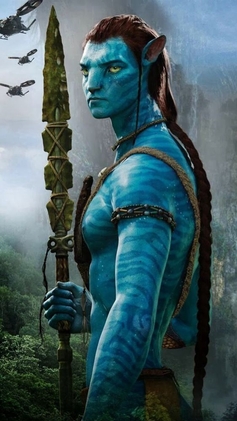
Jake Sully, or Tsyeyk te Suli in the Naʼvi language, is a fictional character and main protagonist of the American epic science fiction film franchise Avatar, created by James Cameron. portrayed by Sam Worthington in Avatar (2009) and its sequels, including Avatar: The Way of Water (2022) and the currently untitled upcoming Avatar 3, Avatar 4, and Avatar 5.
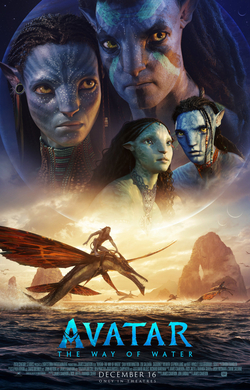
Avatar: The Way of Water is a 2022 American epic science fiction film directed and co-produced by James Cameron, who co-wrote the screenplay with Rick Jaffa and Amanda Silver from a story the trio wrote with Josh Friedman and Shane Salerno. Distributed by 20th Century Studios, it is the sequel to Avatar (2009) and the second installment in the Avatar film series. It features Sam Worthington, Zoe Saldaña, Joel David Moore, CCH Pounder, Stephen Lang, Giovanni Ribisi, Dileep Rao and Matt Gerald reprising their roles from the first film, with Sigourney Weaver returning in an additional role and Kate Winslet, Cliff Curtis, Jamie Flatters, Britain Dalton, Trinity Bliss, and Jack Champion joining the cast. It follows a blue-skinned humanoid Na'vi named Jake Sully (Worthington) as he and his family, under renewed human threat, seek refuge with the aquatic Metkayina clan of Pandora, a habitable exomoon on which they live.

The 2009 American science fiction film Avatar has provoked vigorous discussion of a wide variety of cultural, social, political, and religious themes identified by critics and commentators, and the film's writer and director James Cameron has responded that he hoped to create an emotional reaction and to provoke public conversation about these topics. The broad range of Avatar's intentional or perceived themes has prompted some reviewers to call it "an all-purpose allegory" and "the season's ideological Rorschach blot". One reporter even suggested that the politically charged punditry has been "misplaced": reviewers should have seized on the opportunity to take "a break from their usual fodder of public policy and foreign relations" rather than making an ideological battlefield of this "popcorn epic".
Avatar 3 is an upcoming American epic science fiction film directed, written, co-produced, and co-edited by James Cameron. Distributed by 20th Century Studios, it is the third film in Cameron's Avatar franchise, and a sequel to Avatar: The Way of Water (2022). Cameron is producing the film with Jon Landau. Cameron, Rick Jaffa, Amanda Silver, Josh Friedman, and Shane Salerno were involved in the writing process. Cast members Sam Worthington, Zoe Saldaña, Sigourney Weaver, Stephen Lang, Joel David Moore, CCH Pounder, Giovanni Ribisi, Dileep Rao, Matt Gerald, Kate Winslet, Cliff Curtis, Edie Falco, Brendan Cowell, Jemaine Clement, Britain Dalton, Trinity Jo-Li Bliss, Jack Champion, Bailey Bass, and Filip Geljo reprise their roles from previous films, with Michelle Yeoh, David Thewlis, and Oona Chaplin portraying new characters. In 2018, several titles for the Avatar sequels reportedly leaked, which included the accurate title The Way of Water. Landau says not to expect Avatar 5, or any of the rest, to line up: "We have decided on titles, but I would not go by those other three titles that were out there. You know, if you roll the dice one in six times, you'll pick the right number."
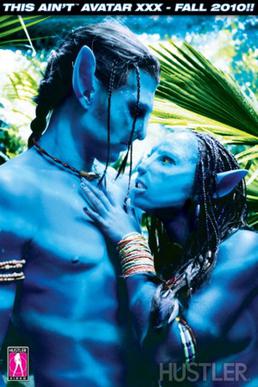
This Ain't Avatar is a 2010 3D science fiction sex comedy parody film that parodies James Cameron's Avatar, to which it serves as a spiritual sequel. The film was shot, edited, and directed by Axel Braun and stars an ensemble cast headed by Chris Johnson as Jake, the main human character. It was produced by Hustler Video. Industry reviewers noted that the release used old-style rather than modern 3D technology and faulted it for its poor production quality.

Pandora – The World of Avatar is a themed area inspired by James Cameron's Avatar located within Disney's Animal Kingdom theme park at the Walt Disney World Resort in Bay Lake, Florida, near Orlando. Set a generation after the events of the Avatar films, the area is based upon the fictional habitable exomoon, Pandora, and features Pandora's floating mountains, alien wildlife, and bioluminescent plants. Spanning 12 acres (4.9 ha), Pandora – The World of Avatar includes two major attractions, Avatar Flight of Passage and Na'vi River Journey, as well as retail and dining outlets.
Avatar is an American epic science fiction media franchise created by James Cameron, which began with the eponymous 2009 film. Produced by Lightstorm Entertainment and distributed by 20th Century Studios, and consists of associated merchandise, video games, and theme park attractions. Avatar is set in the mid-22nd century on Pandora, a lush habitable moon of a gas giant in the Alpha Centauri star system. The film's central conflict is between the indigenous Na'vi led by Jake Sully and Neytiri, and humans led by Colonel Miles Quaritch from the Resources Development Administration (RDA), a megacorp which has arrived on Pandora to colonize and pillage it for its natural resources. The title of the series refers to the genetically engineered Na'vi body operated from the brain that humans pilot to interact with on Pandora.
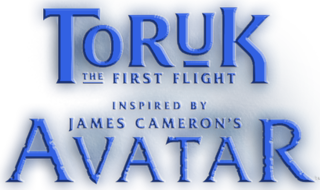
Toruk – The First Flight was a Cirque du Soleil touring production that premiered in December 2015, and was inspired by James Cameron's film Avatar. It depicts a world before the events depicted in the film. The show began its development in Montreal, Quebec, and then moved in August 2015 to the CenturyLink Center in Bossier City, Louisiana, where rehearsals took place until the show premiered. The CenturyLink Center was chosen because the massive set of the show did not fit in the Cirque du Soleil studios in Montreal.

Na'vi River Journey is a dark ride attraction at Disney's Animal Kingdom's Pandora – The World of Avatar. The ride takes guests through the Kasvapan River of Pandora from the 2009 film Avatar, showcasing native animals and bioluminescent flora, with inclusion of complex Audio-Animatronics.

Avatar Flight of Passage is a 3D flying simulator attraction within Pandora – The World of Avatar at Disney's Animal Kingdom. Set in the Avatar universe, the attraction allows guests to take flight on a native mountain Banshee and soar across the landscape of Pandora.
Avatar 4 is an upcoming American epic science fiction film co-written, co-edited, co-produced and directed by James Cameron. Distributed by 20th Century Studios, it will be the sequel to the upcoming 2025 Avatar 3, and the fourth installment in the Avatar franchise. It will star Sam Worthington and Zoe Saldaña, among others from the original cast, reprising their roles. The screenplay is written by James Cameron and Josh Friedman. Cameron stated that Avatar: The Tulkun Rider is being considered as a possible title for the film.

Avatar: Frontiers of Pandora is a 2023 action-adventure game developed by Massive Entertainment and published by Ubisoft. Part of the Avatar franchise, the game was released for PlayStation 5, Windows, Xbox Series X/S, and Amazon Luna on December 7, 2023. It received mixed reviews from critics.

Neytiri te Tskaha Mo'at'ite is a fictional character in the Avatar franchise, created by James Cameron. She is portrayed by Zoe Saldaña.
Lego Avatar is a Lego theme based on the film series of the same name created by James Cameron. It is licensed from 20th Century Studios, The Walt Disney Company and Lightstorm Entertainment. The theme was first introduced on 1 October 2022. Subsequent sets were released in 2023, alongside the next film, Avatar: The Way of Water.
Bailey Bass is an American actress. She is known for her roles as Tsireya, a free diver, in Avatar: The Way of Water and Claudia in the television series Interview with the Vampire.
